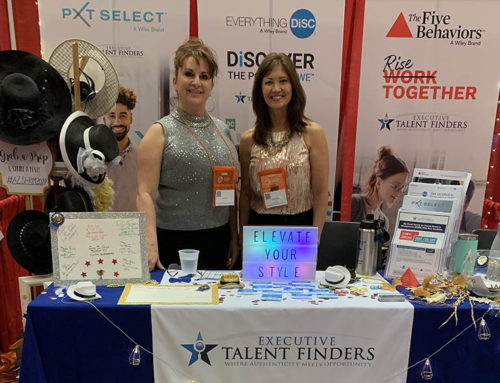At the tail end of a three-and-a-half hour drive from Pinetop-Lakeside, AZ to Phoenix on a hot summer day, I saw a freeway sign that gave me pause. It read, “Drive like the person your dog thinks you are.” How clever and poignant. It made me think twice as I was careening down the hills, tires squealing, and my Australian Shepherd, Emmy, was clenching her teeth onto her crate in the back of my SUV. I was on autopilot mentally and figuratively.
It made me wonder, how often do we unknowingly enter autopilot mode in the workplace and behave in a manner that is unbecoming to our employees? More importantly, what can we do about it? How do leaders consistently show employees that they value their contributions and appreciate their efforts?
Although our dogs give us the most incredible, unconditional affection, they are indeed driven by a few key motivators: food, shelter and love. In the workplace, employees have similar needs. Starting with the latter, your employees need love in the form of appreciation and social connection, shelter in the form of career development, and food in the form of a good salary, benefits and perks.
Show Appreciation
Remind employees in a thoughtful and sincere manner what they’ve done right to impact the team. This is extremely effective if the acknowledgment is authentic, delivered in a way that edifies your employee both personally and professionally, and done both in private and in front of their peers. Your positive encouragement and high fives will go a long way when times are tough and your team has to dig deep to keep the momentum up.
Create Social Connections
According to an EY Belonging Barometer study outlined in Harvard Business Review, 39% of respondents said they felt the greatest sense of belonging when work colleagues checked in with them on both a personal and professional level.
Stay ahead of the curve by assigning an “onboarding buddy” at the very beginning of a new hire’s journey with the company. The onboarding buddy can be both a formal and informal resource who provides support, helps your new employee maneuver the “ins and outs” of social protocols, and answers the everyday decisions like what not to eat at the cafeteria, how to book a conference room, and all of the mundane, everyday tasks that can ease the transition of your new hire and get them up to speed and productive in no time.
Pave A Career Path
Even larger organizations with global operations and multiple business units often operate these units as siloed, independent entities. This makes it hard for current employees to transfer into or out of different business units.
There are numerous reasons to prioritize career pathing, not the least of which is retaining top talent. There is an internal battle that grows within the minds of high-potential employees who are ambitious, motivated and looking for professional growth, and that battle can be answered with one simple question: “What is my career path if I stay here?” In fact, according to The 2019 Deloitte Global Millennial Survey (download required), the top three reasons millennials/Gen Z would leave their company in the next two years are:
- Pay/financial rewards (43%/34%)
- Little opportunity to advance (35%/33%)
- Lack of learning/development opportunities (28%/27%)
From an organizational standpoint, “shelter“ comes in the form of career development. A focus on individual employee development planning will not only inform your employees of the distinct and varied career paths that are available to them within your organization, but it could encourage them to stick around.
If you don’t have a structured training program or career pathing program, don’t despair. Ask your employees what they envision their career path to look like and begin to prepare individualized or on-demand training programs to help get them there. This can include investing in outsourced services to help employees learn, grow, cultivate their skills in their given career path of choice, or enlisting your internal training department’s expertise.
The cost of investing in career pathing programs is a drop in the bucket compared to the cost of employee turnover, disengagement and having to repeat the cycle of hiring, training and retraining, all over again. Career pathing is a vital key to enhancing your attractiveness and long-term viability as an organization that either keeps its top talent or prepares top talent for their next gig. This will boost your company’s reputation as an organization that invests in its employees.
Salary, Benefits And Perks
Last but certainly not least is the food, the essentials. Your organization’s compensation and benefits package should be in line with industry averages. Beyond compensation, there are numerous ways to attract and retain the right talent, starting with the communication of your mission, vision and values as it relates to your employees, customers and the broader community. Giving employees extra time off for volunteerism, community involvement and charitable activities can go a long way toward fulfilling an employee’s ability to personally align with your purpose as an organization: food for the soul.
You can also provide health and wellness benefits like discounts on gym memberships, flexible work schedules or the ability to work remotely on occasion or on a full-time basis. Or maybe even a popular perk like “Bring Your Dog to Work Day” — a gentle reminder to you as well as the entire organization to be the leader your dog thinks you are.
Debbie Ince
- Debbie Ince is the Founder and President of Executive Talent Finders— Recruiting , Engaging and Retaining TOP TALENT for innovative, high growth organizations & institutions, seeker & champion of authenticity.
This article first appeared on forbes.com. See original here.




